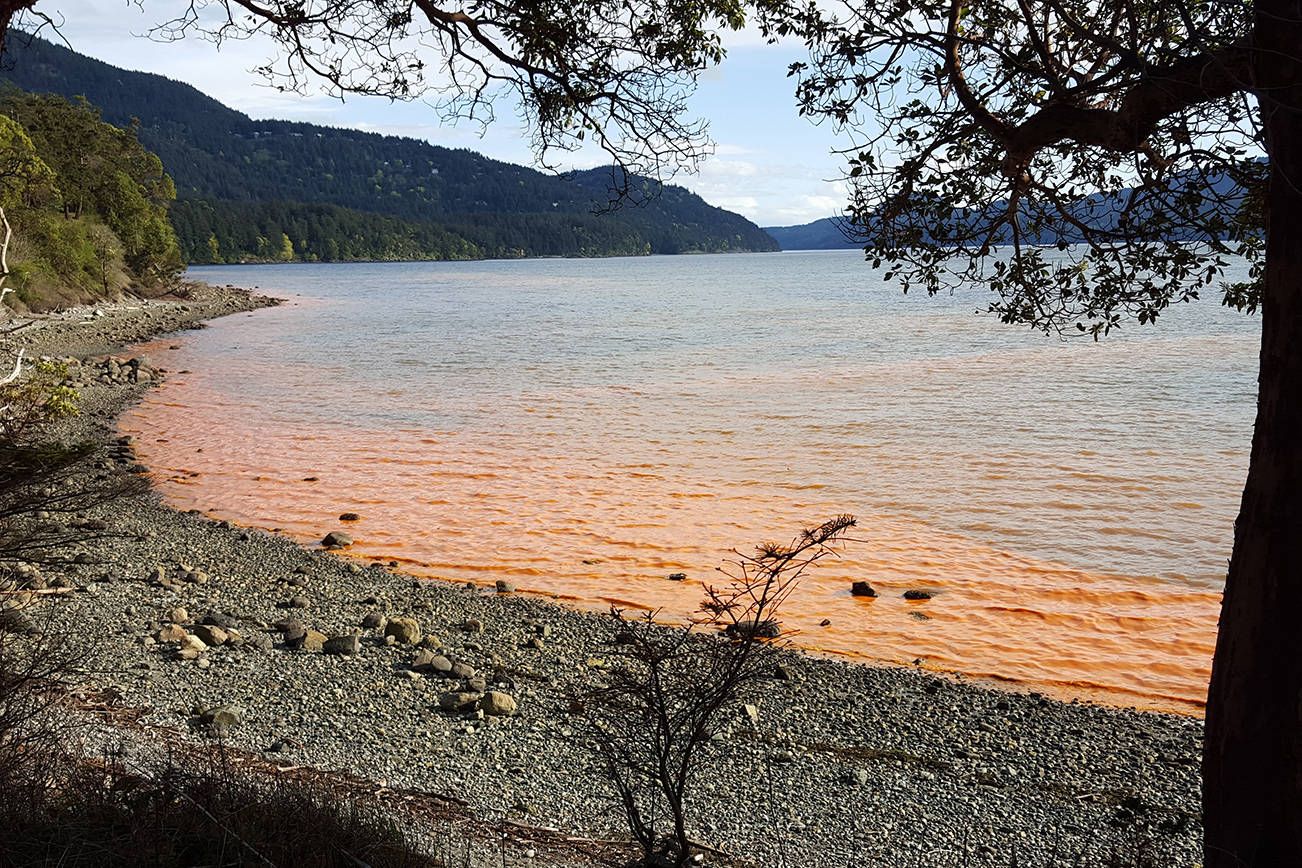Submitted by John Burkhardt
University of Washington Tacoma
Alexandrium catenella is a toxic species of microscopic, single-celled marine algae that produces saxitoxins, a group of potent neurotoxins that cause paralytic shellfish poisoning along the Pacific and Atlantic coastlines of the United States and Canada. Paralytic shellfish poisoning, or PSP, is a potentially fatal illness resulting from eating shellfish that have ingested Alexandrium cells and concentrated the saxitoxins in their tissue.
Alexandrium is most abundant during the summer and spends the winter in marine sediments on the floor of coastal bodies of water, such as the Salish Sea, as a dormant resting cyst. When environmental conditions are favorable during the spring and summer, these cysts germinate to form swimming cells in the water column where they multiply and may be food for shellfish. (Life Cycle of dinoflagellate Alexandrium catenella.) The distribution and abundance of cysts in the sediment during the winter can be used to identify where there is greater potential for Alexandrium to bloom.
A bloom is a rapid increase in the amount of Alexandrium in a body of water. During these harmful algal blooms (HABs), commercial shellfish harvests are delayed or canceled and public beaches are closed to protect human health. The Washington State Department of Health monitors shellfish for the presence of the saxitoxins produced by Alexandrium, ensuring the safety of shellfish consumers.
The National Centers for Coastal Ocean Science, a research office of the National Oceanic and Atmospheric Administration, awarded a multi-year research grant of $560,000 to University of Washington Tacoma and the University of Alaska Fairbanks as part of a nationwide effort to improve monitoring of and response to HABs along the United States coasts. This project is in partnership with NOAA’s Beaufort Laboratory in North Carolina.
Cheryl Greengrove, Ph.D., of the Sciences and Mathematics Division in the School of Interdisciplinary Arts and Sciences and co-principal investigator Julie Masura, senior lecturer in SIAS/SAM and research affiliate faculty with the Center for Urban Waters, will be leading the effort. University of Washington Tacoma’s Greengrove and Masura are at the forefront of Alexandrium detection in the Salish Sea, using methods first developed at Woods Hole Oceanographic Institution. Masura is a world-class expert at identifying cysts in sediment samples using a microscope, a critical but labor-intensive and time-consuming process. University of Washington Tacoma undergraduate researchers will also be involved in field sampling and lab work for this project.
With the NOAA grant, Greengrove, Masura and colleagues aim to develop new methods for cyst detection and enumeration to replace the laborious sample processing and hours of microscopy currently required for cyst counting. The new methods will employ molecular-level analytical procedures known as quantitative polymerase chain reaction (qPCR) and fluorescent in situ hybridization (FISH), techniques that may improve the accuracy and significantly reduce the time needed to detect and count Alexandrium cysts.
The Beaufort Lab has already used these new techniques to count active Alexandrium phytoplankton cells in the water column, but Greengrove and colleagues plan to adapt the methods to identify and count the cyst stage in the sediment. The main challenges include managing winter sea conditions during sample collection and penetrating the tough outer layer of the cysts using the new molecular methods.
“If these methods work, they could be adapted for use by the Washington State Department of Health Shellfish Monitoring Program, local citizen science monitoring efforts like Sound Toxins, and similar programs around the country and world,” said Greengrove.
The NOAA grant to University of Washington Tacoma is just one of 12 new projects NOAA is funding around the United States as part of its commitment to advancing the understanding of harmful algal blooms (HABs), the species and toxins involved, application of new HAB detection technologies, production of HAB forecasts, and exploring new HAB prevention and control methods. Other NOAA grants are funding projects in Florida; the Gulf of Mexico; the Great Lakes; New England; the Chesapeake and Delaware Bays; and California.
For more information, contact Cheryl Greengrove at cgreen@uw.edu.




